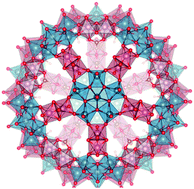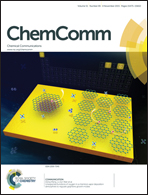The mechanism of CO2 hydration: a porous metal oxide nanocapsule catalyst can mimic the biological carbonic anhydrase role†‡
Abstract
The mechanism for the hydration of CO2 within a Keplerate nanocapsule is presented. A network of hydrogen bonds across the water layers in the first metal coordination sphere facilitates the proton abstraction and nucleophilic addition of water. The highly acidic properties of the polyoxometalate cluster are crucial for explaining the catalysed hydration.


 Please wait while we load your content...
Please wait while we load your content...